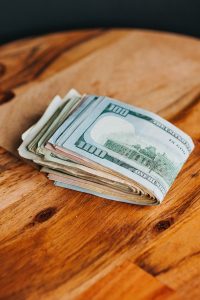Forex trading is the process of buying and selling currencies to make a profit. Leverage is an essential concept in forex trading as it allows traders to trade larger positions with a smaller amount of capital. In simple terms, leverage is a tool that multiplies the trader’s buying power, allowing them to open larger positions than they would have been able to do with their own capital.
Leverage is expressed as a ratio, such as 1:50, 1:100, or 1:500. It represents the amount of money a trader can control with each dollar of their own capital. For example, if a trader has a leverage of 1:50, they can control $50 for every $1 of their own capital. This means that the trader can open a position of $50,000 with just $1,000 of their own capital.
Leverage is a double-edged sword in forex trading. On one hand, it can help traders make significant profits with a small amount of capital. On the other hand, it can also lead to significant losses if not used properly. Traders must understand the risks associated with leverage and use it responsibly.
There are different types of leverage in forex trading. The most common types are margin-based leverage and notional-based leverage. Margin-based leverage is the most commonly used type of leverage in forex trading. It is the ratio of the trader’s margin to the size of the position they want to open. For example, if a trader has a margin of $1,000 and wants to open a position of $10,000, their margin-based leverage would be 1:10.
Notional-based leverage, on the other hand, is the ratio of the total value of the position to the trader’s capital. It is expressed as a percentage. For example, if a trader has a capital of $10,000 and opens a position of $100,000, their notional-based leverage would be 10:1.
The amount of leverage a trader can use depends on the broker they are using and the regulations in their country. Some countries have strict regulations on the amount of leverage that can be used in forex trading to protect traders from excessive risk. Traders should always check the regulations in their country before choosing a broker and using leverage.
Traders must also understand the risks associated with leverage. While leverage can amplify profits, it can also amplify losses. If a trade goes against a trader, they can lose more than their initial investment. This is known as a margin call. A margin call occurs when the trader’s losses exceed their margin, and the broker closes their position to prevent further losses. Traders must always use stop-loss orders to limit their losses and manage their risk.
In conclusion, leverage is an essential concept in forex trading. It allows traders to trade larger positions with a smaller amount of capital. However, traders must understand the risks associated with leverage and use it responsibly. They should always check the regulations in their country and choose a broker that offers a reasonable amount of leverage. With proper risk management, traders can use leverage to their advantage and make significant profits in forex trading.






